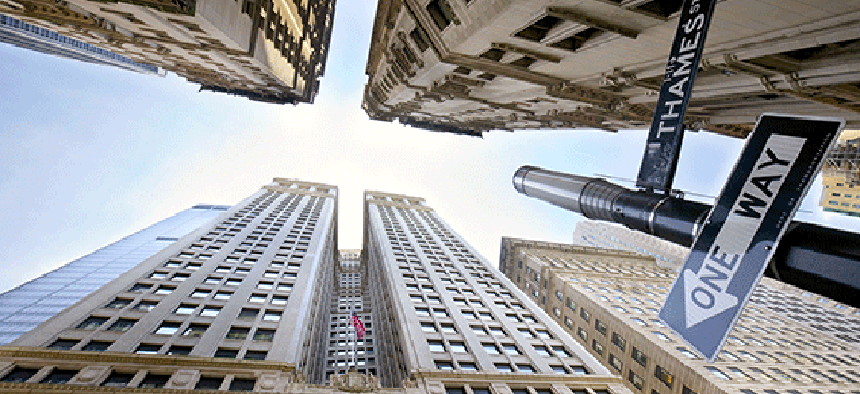Go South, Nonprofits: A Guide to Grabbing Some of Manhattan’s Cheapest Commercial Space

As the costs for commercial real estate in New York City approach and in some cases eclipse the highs of 2007, nonprofits looking to take additional space or renew leases are often dumbstruck with sticker shock and unsure what to do. If you signed a lease ten years ago at $18 per square foot and your landlord is telling you a renewal will run you $50 or more, you need some Advil and some answers. We can help with the latter.
Nonprofits always have to create a balanced office environment that is nice (in line with the needs of the employees and donors) but not so nice that it appears lavish. Ultimately, everything is driven by the mission and an extra dollar in rent means one less dollar for programming. So, with respect to office space, the first questions any nonprofit should ask itself are: where should we be and what will it cost? And the answer is: if you’re a nonprofit in Manhattan and you are not south of Chambers Street, you should be. There are of course a few good reasons to be north of Chambers Street, but not many.
Downtown Manhattan, also known as the “Financial District” or “Insurance District,” is located East of Broad Street It is where you will find the cheapest rents in Manhattan. Currently rents in this area are in the $30-45 per square foot range. In addition, there are a host of incentive programs specific to Downtown that provide an additional $10 per square foot of cost savings over a five year term.
Economically, there is no cheaper place to go in Manhattan than Downtown. But it's not just about dollars and cents or we’d all be in Jersey. The question is, do you want to spend your days Downtown? We say yes. Culturally, downtown is on the rise. The mix of tenants choosing downtown has become more dynamic than ever with companies in media and technology and other industries that have traditionally shunned this area going there for the cheaper rents, water views and old buildings with great bones. And with young, hip companies calling downtown home, the quality and variety of retail and food options is getting better and better. Add to this great transportation options and it’s hard to argue with Downtown as the destination of choice for nonprofits.
Ok, so maybe you’re sold on Downtown, what’s next? In planning a move it’s important to give yourself enough time. How long does it take? For most, plan for at least 6-9 months. It’s going to take about a month to find space and negotiate basic business terms. Then it’s going to take a month or two to negotiate the lease document. And finally it will take 4-6 months to build space, should the space need to be built from scratch, or a month or two if the scope of construction is paint, carpet and move a few walls. If you have a space you like and just want to renew your lease, you still want to start discussions a year or so before your lease expires. You don’t want to be caught in a position where you realize you didn’t get the deal you wanted and now you don’t have enough time to move.
What else should you know? Depending on the financial strength of the nonprofit, it is likely that you will have to post the equivalent of 4-6 months rent as a security deposit. It should be possible to have some of this “burned down” over the course of the lease. Typically we expect to have a month of security returned after 2-4 years of steady rent payments and perhaps another month returned after another year or two.
What about real estate taxes? Unfortunately, nonprofits leasing space are typically responsible for their portion of a building’s increases in real estate taxes. This means that if the taxes this year, for example, are $1000 dollars for the building and they go up $100 in the next year, you will only be responsible for your portion of the increase. So if you have 10% of the building, you’ll pay 10% of the increase, or $10 dollars in real estate taxes in year two of your lease. The only time a nonprofit does not pay real estate taxes is if you own your property or you’re in a building with all nonprofit tenants, but at this point, there are very few buildings that meet this second criteria.
Now if you are lucky enough to own your own space, you may want to consider a sale-lease back deal or a straight out sale of the real estate and move into a leased option. The Girl Scouts did this recently and converted millions of dollars of equity into working capital.
Though Manhattan is far from cheap, it remains a great place to work. If approached the right way, with a broker who knows what they’re doing, nonprofits will continue to thrive in New York City – particularly south of Chambers Street.
Jane Brody is the head of Vicus Partners’ Nonprofit Division. She has also done consulting work with Ben & Jerry’s, UNICEF, the American Red Cross, Coca-Cola, and the Special Olympics. Andrew Stein is a founding principal at Vicus Partners, where he has negotiated on behalf of Mount Sinai Hospital, The Leukemia and Lymphoma Society, the World Lung Foundation Children’s Defense Fund, and many others in the New York Metro area.
